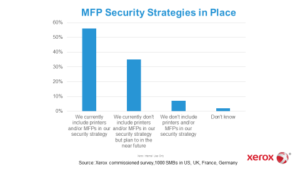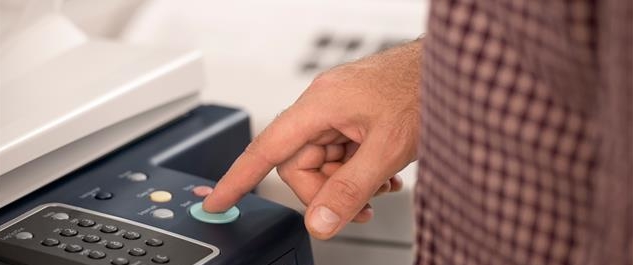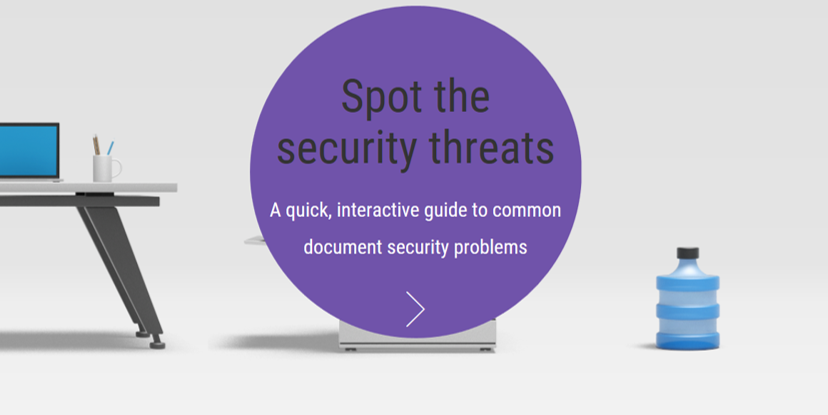Note: This article was filed by a paid contributor to Xerox Corporation.
When you think about securing your business, what does that mean to you?
- A security guard manning your building’s lobby?
- Each employee receiving a company-owned smart device?
- Rigorous security measures on all software and hardware used to power your business?
While there really isn’t a wrong answer to the original question, I’d like to suggest that all forms of business security are equally important. Why? Because a lapse in security doesn’t just affect your business. It affects your employees, customers, and prospects, too.
Data security, website security, even the physical security of your employees—you can never have too much security for your business. Today, I’d like to further explore this topic and identify ways you can create a more secure business in 2017.
1. Secure Your Paperwork
Although much of business nowadays takes place in cloud-based applications and software, you no doubt have legacy paperwork set aside in filing cabinets somewhere. While a physical breach of your premises is unlikely, having any sensitive company documents solely stored in a paper format isn’t really the best practice in terms of security, organization, or productivity.
According to Anatomy of an Intelligent Print Environment, the best way to handle securing your paperwork is to scan all hard copies of in-house documents and integrate them within your digital documentation. You can also take it one step further and password-protect those scanned PDFs to ensure that the right people have access to them.

2. Secure Your Printer
Did you know “70% of organizations have had one or more accidental data breaches through printing”? Printers aren’t typically the first place small business owners look to when considering how best to secure their businesses and that’s probably because computer breaches tend to get the most press. Printers (and their scanners) are part of your business arsenal of resources, so it’s important to put security measures in place.
Consider the following:
- Don’t be afraid to print or scan sensitive documents. Just be sure your printer is encrypted and also wipes its data clean at regular intervals.
- Never leave documents to sit around in printer trays. Switch to secure printing so that only the authorized print requestor can retrieve their documents.
- Allow other users to access your printers, but be sure to have a way to create a log of those users, their activities, and then monitor and create restrictions accordingly.
3. Secure your Mobile Devices
BYOD (bring your own device) came onto the business scene many years ago as smartphones proliferated through every part of our lives. Although many small business owners have since allowed the use of personal smartphones for business purposes, not all of them are mitigating for the security risks they may pose.
If your small business allows for mobile device usage (which is a good thing in terms of productivity), then you’ll want to create a robust BYOD program that includes:
- Dissemination of company devices to employees for work purposes only (or securing their personal devices if they prefer to use those).
- Training program for employees so they’re aware of security best practices and guidelines for using their smartphones for work.
- Secure access to your network.
- Device monitoring, maintenance, and support.
- Simplification of cloud-to-device and vice versa. This includes syncing Xerox® Mobile Link App with your multifunction printer, enabling print on demand, and more.
4. Secure Essential Equipment
Studies show that for every 100 records stolen from a company, businesses stand to lose about $25,000. Software security is a major concern for businesses—from the one-person startup to the billion-dollar corporation.
If you haven’t done so already, this should be a priority for your small business this year. Ensure that you:
- Add a firewall and encrypt every single one of your company’s computers and mobile devices.
- Encrypt and secure all of your printers. Ideally, use ConnectKey enabled multifunction printer with McAfee whitelisting technology for multifunction printers.
- Password-protect all scanned PDFs.
- Use secure payment gateways.
- Buy software from trusted third-party providers.
- Use whitelisting and blacklisting software to determine which files can be shared or sent to print.
5. Secure Your Website
Websites have become an essential piece of every business’s marketing and sales arsenal. And regardless of how “off the radar” you may think your small business website is, don’t be fooled. Hackers will look for any weakness online that gives them access to valuable information whether it be your own confidential company information or the sensitive banking and identity information your customers shared with you. In fact, 70% of known security breaches occurred intending to infect the website’s customers’ computers with malware.
That being said, there are ways you can secure your company’s website. Check with your web hosting provider first to see what sort of firewalls and security layers they offer. Then work with your content management system (like WordPress) to put additional security blocks in place. And always work with trusted third-party resources. If you’re unsure of who the provider is or there’s no clear validation of their trustworthiness, don’t use them.
Printing, scanning, BYOD usage, hardware, software, and even your paper trail—these are all basic components of the modern workplace. Unsurprisingly, hackers and others wanting to cause your business harm know of this and that’s why it’s exceedingly important to secure your business from every angle.
Not only will these security enhancements and resources keep your small business, employees, and customers safe, but they’ll also help you be more productive, too.
Ramon Ray, Marketing & Publisher of Smart Hustle Magazine and Small Business Evangelist, Infusionsoft. He frequently blogs about tech at SmallBizTechnology. Full bio at http://www.ramonray.com/. Visit his Small Business Solutions Blog Author Page to get in touch on Google+, Twitter or Facebook.
Share this article on Twitter! Tweet: 5 Ways You Need to Secure your Small Business in 2017 via @RamonRay https://ctt.ec/epdtj+
Subscribe to the Small Business Solutions Blog and receive updates when we publish a new article. [wysija_form id=”1″]



